At my company, we actually are allowed to use scooters inside of our building, and in fact our company bought about 20 Razor scooters. A few bought high-end, custom Aluminum racing/trick scooters ($200-350). My son had a 3-wheel toy he had used a lot which he did not care for, so instead of throwing it away, I decided to build a custom scooter from those parts and scrap steel pieces, trying to buy as little as possible.
This is what I started from:
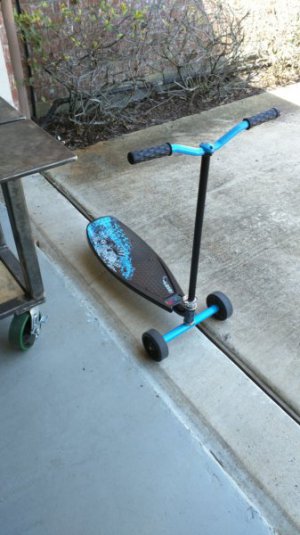
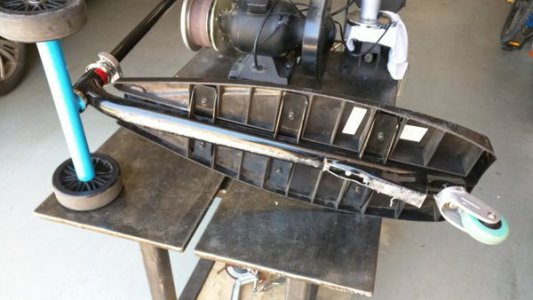
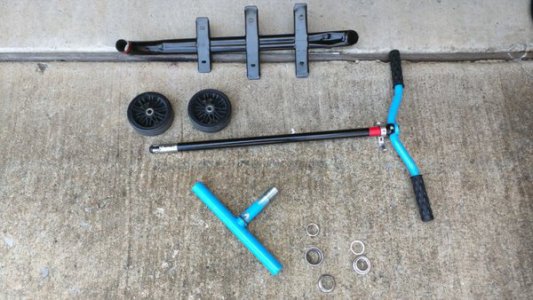
At a high level, I wanted "something" like this:
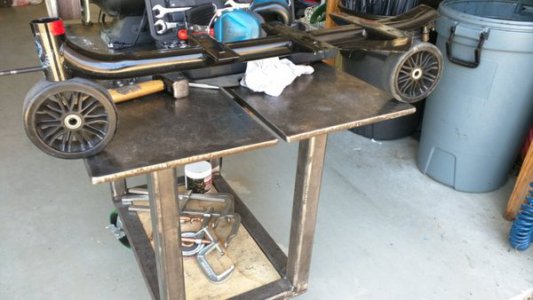
So I started cutting stuff off ...
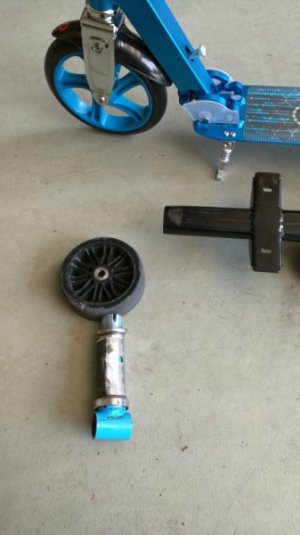
I cut some scrap pieces to make the new fork, including a re-enforcement plate on each side:
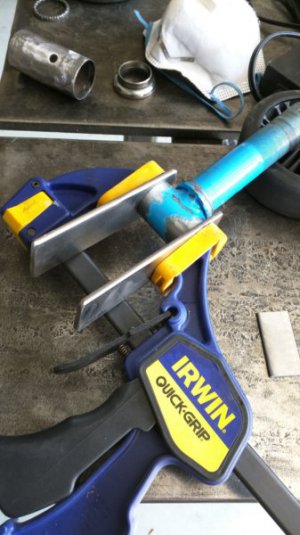
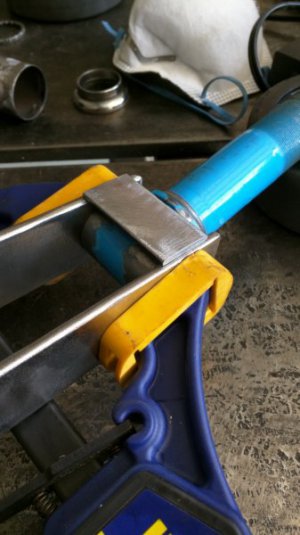
I first welded the two arms, then the plates:
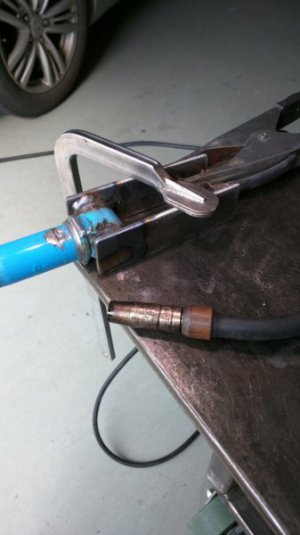
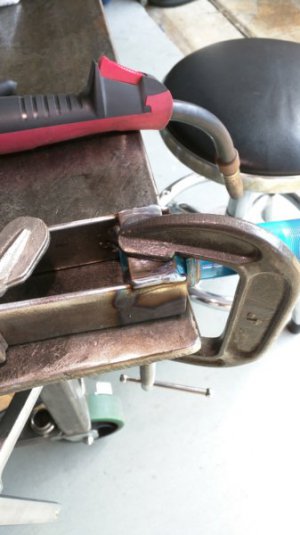
Then marked & drilled the holes for the screw/wheel shaft:
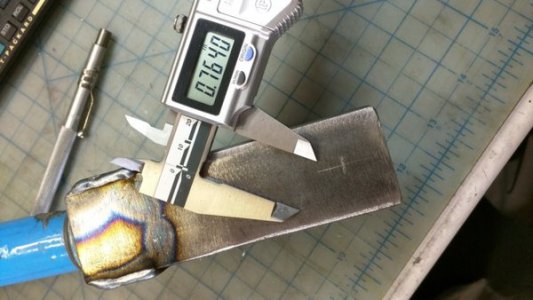
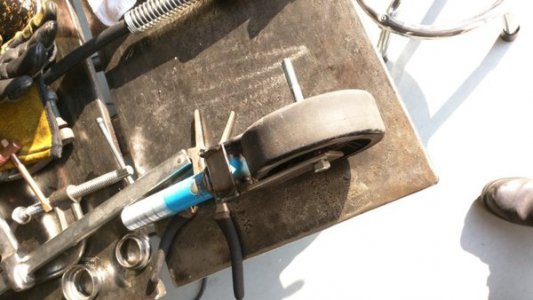
Then I found a "suitable" scrap piece to tie the main board and the headset piece:
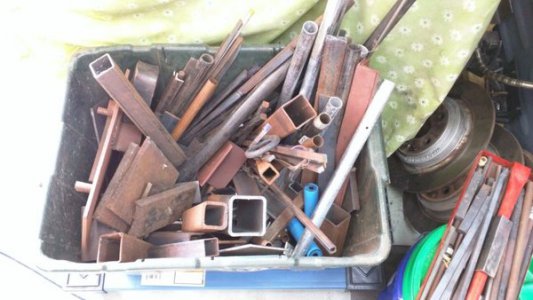
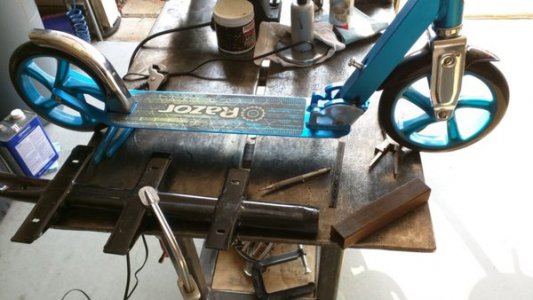
I then prepped the curved surface to more-or-less match the curvature on the headset piece and then welded it as straight as I c:
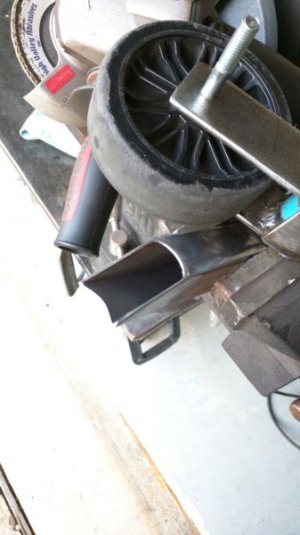
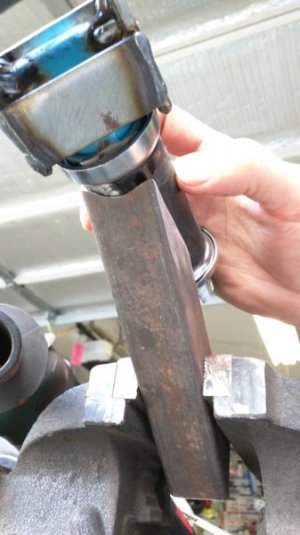
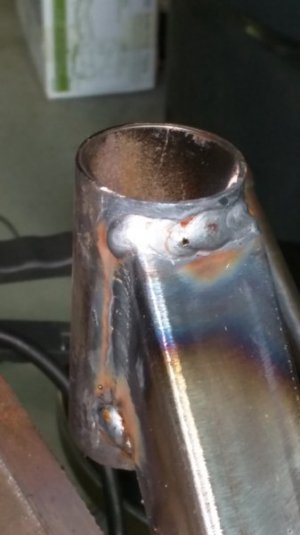
I then again, trying to hold everything as straight as possible, I welded that piece to the base. Since the main steel piece is hollow and relatively "thin", I welded a piece or square tubbing to the inside portion strengthen that "weak" area from bending under weight:
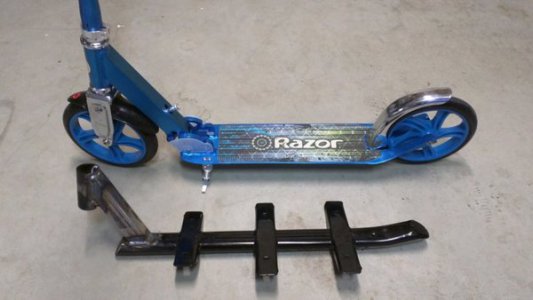
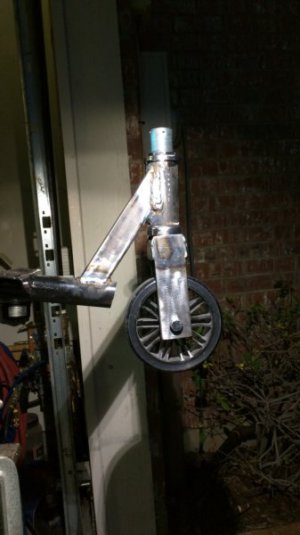
I then did my best to align the new rear fork to try to keep the bed "level" (well, as good as possible), which meant I had to slightly angle the two pieces down a few degrees:
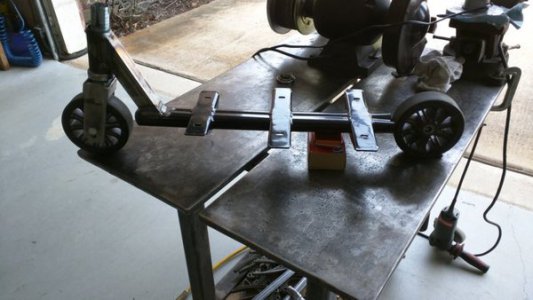
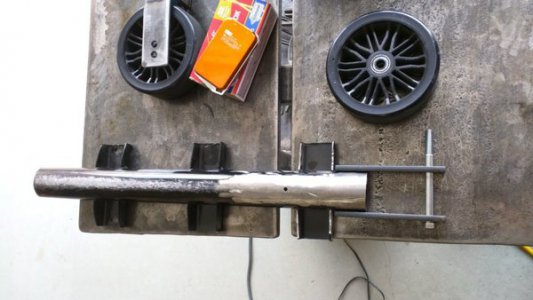
End result. I was not level as I wanted, but close enough:
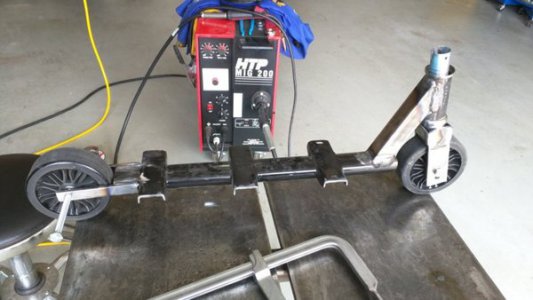
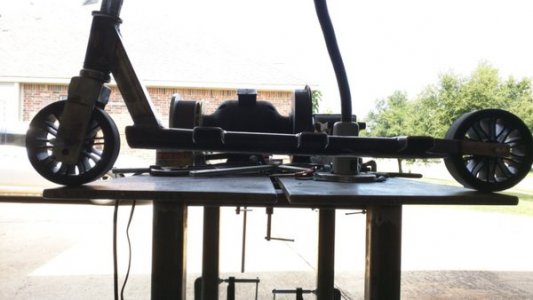
Quick test to make sure it held weight (about 175 lb):
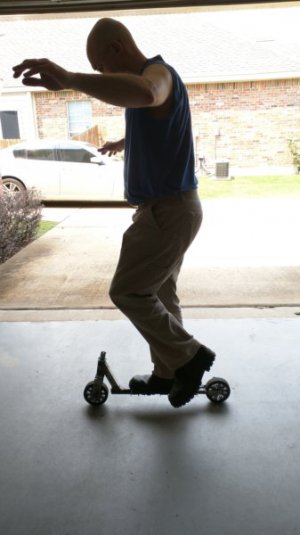
I then cut the base "wings" all equal, cut more scrap pieces, and welded them to create the "bed" of the scooter:
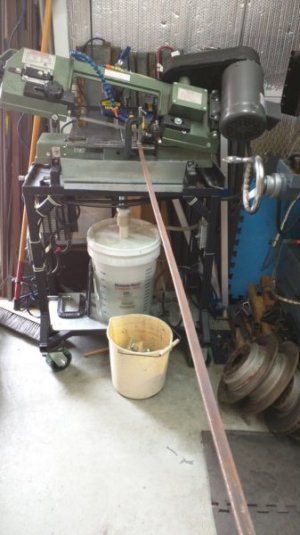
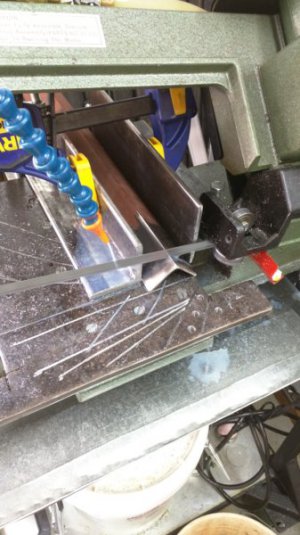
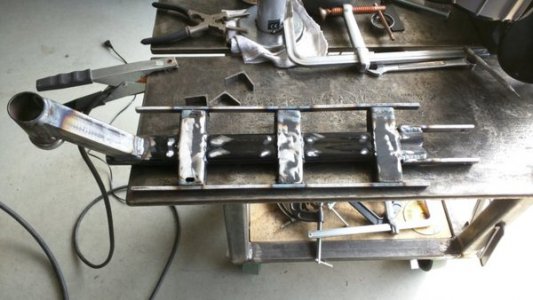
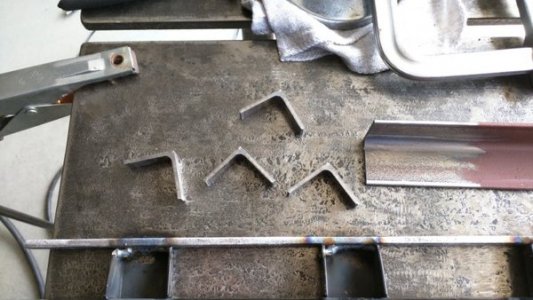
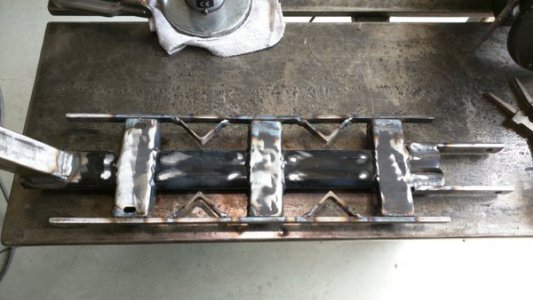
Here is the mostly completed scooter:
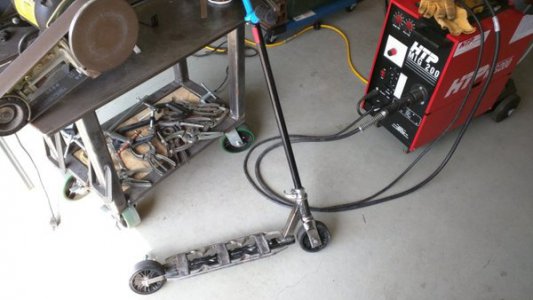
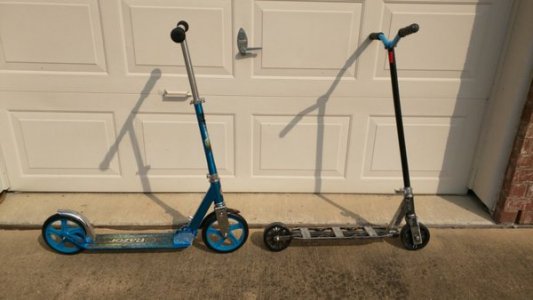
I of course had to cut/trim the bolts, but I also needed custom spacers (front and back), which I made from bearing bronze rod on my lathe:
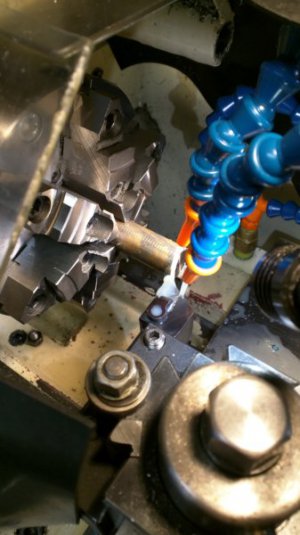
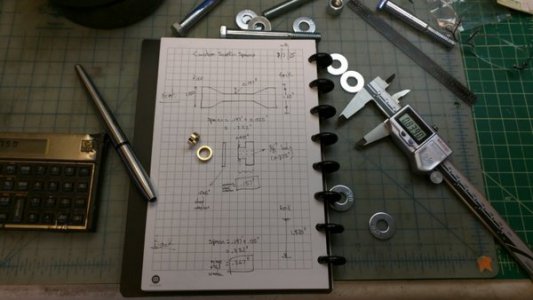
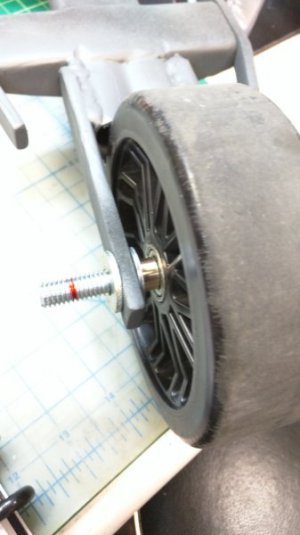
Prime, and paint. Since my company just re-branded, I went ahead and painted the custom scooter with the basic colors:
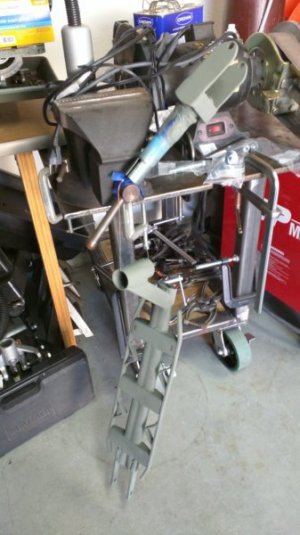
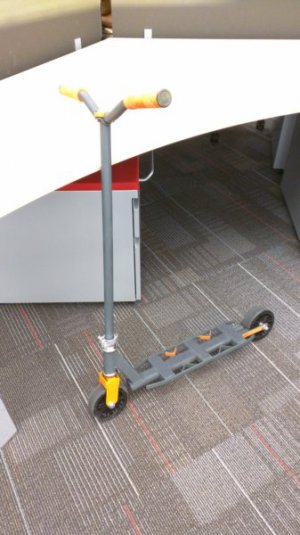
How does it work? It it very fast on carpet since the wide tires does not sink into the carpet, but it does turns a little "weird" with the wide tires (unlike the skinny roller blade-type wheels on most scooters), but one gets used to very quickly. Strength-wise, two "big" guys (a little bit over 600 pounds combined) got on the scooter at the time time - solid. No bending/movement of any kind. One of them jumped several times on the scooter. Same - no damage. Far greater strength than I expected.
Total out of pocket = about $35-40 for the new bearings, spray, etc.. Having the only DIY scooter in the company = priceless.

Will
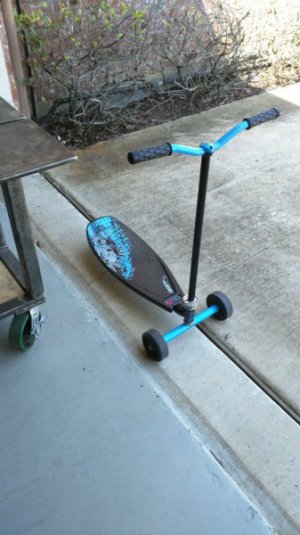
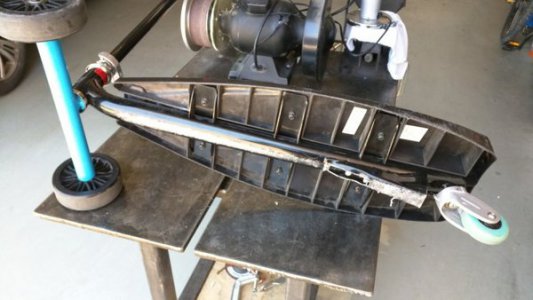
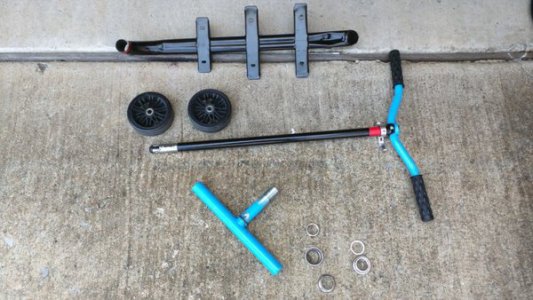
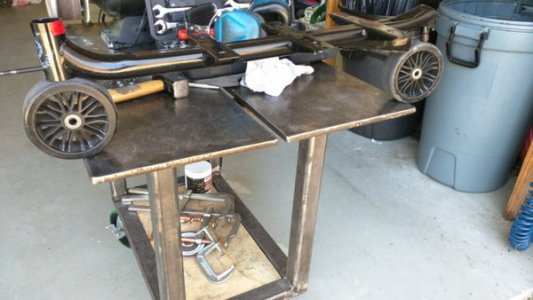
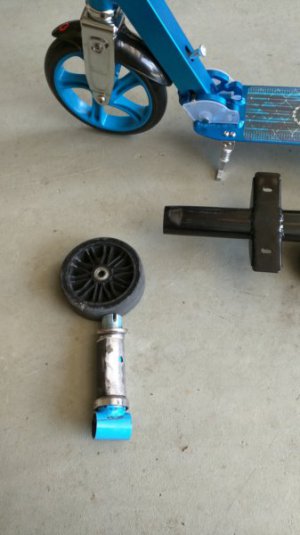
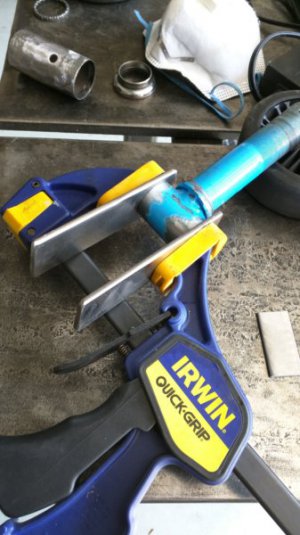
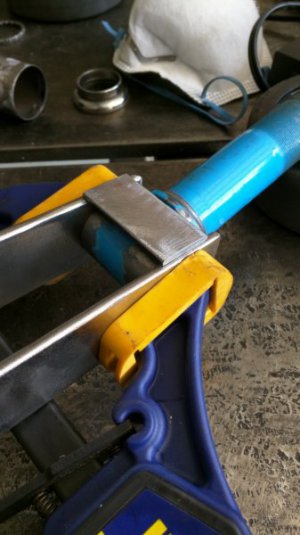
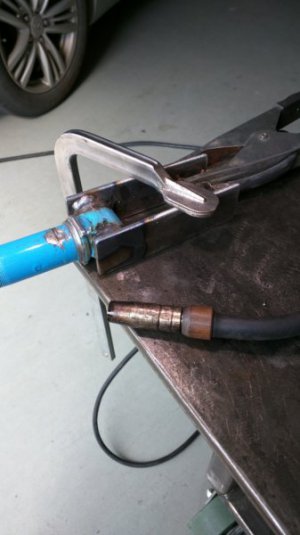
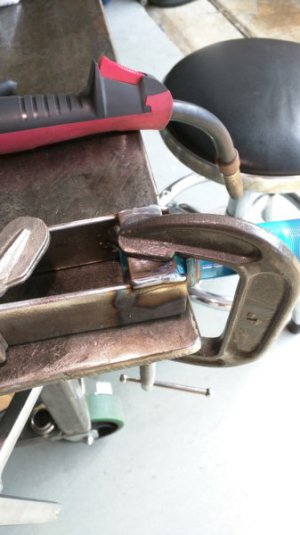
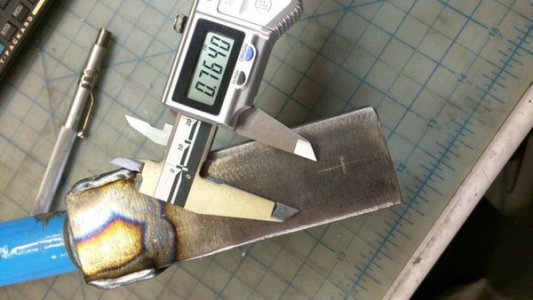
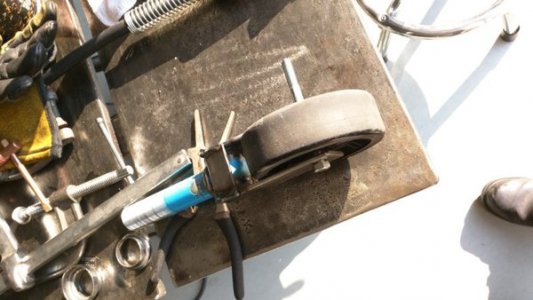
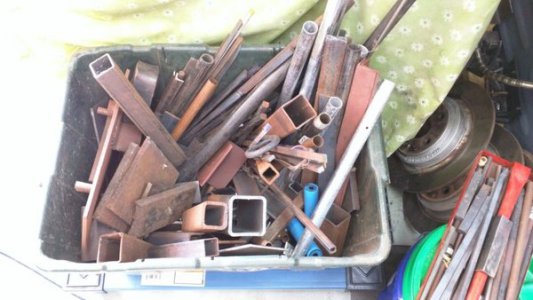
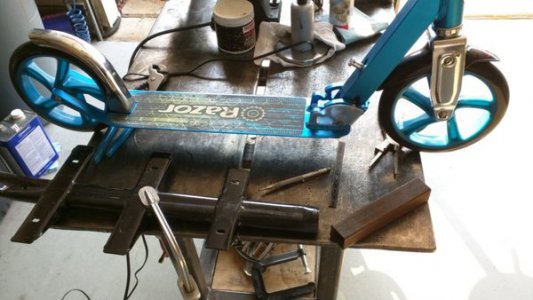
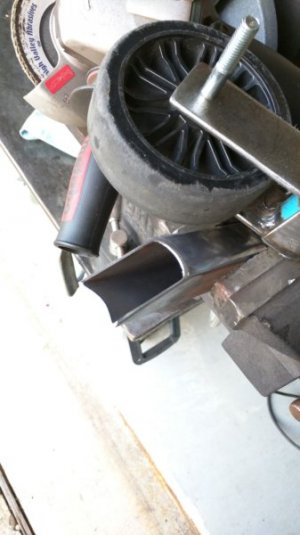
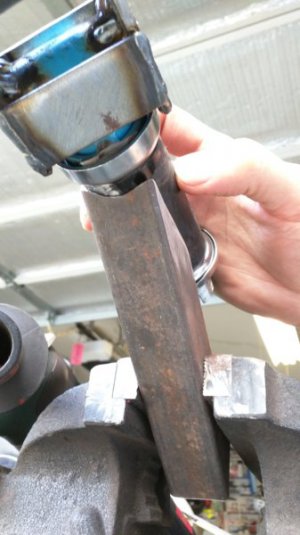
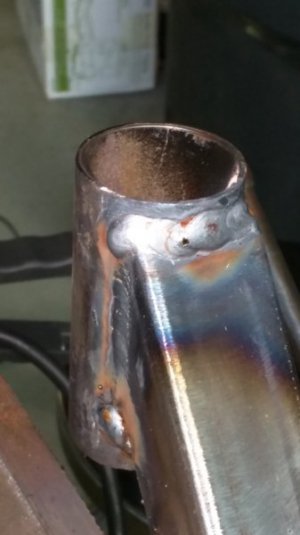
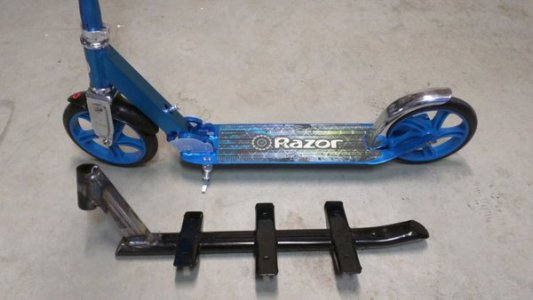
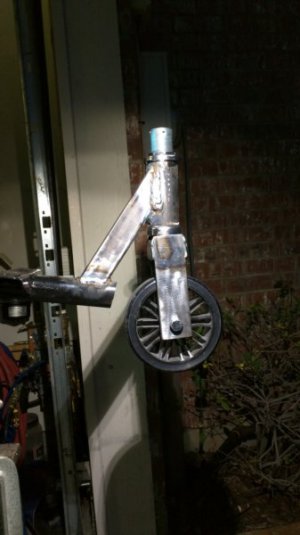
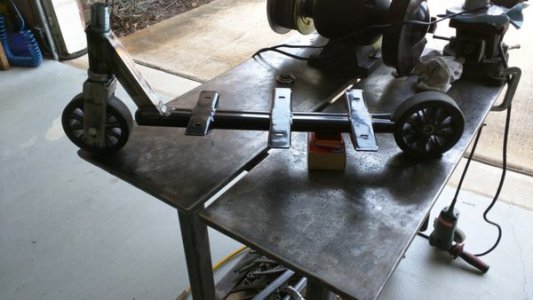
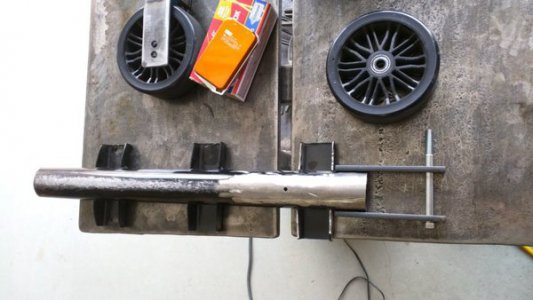
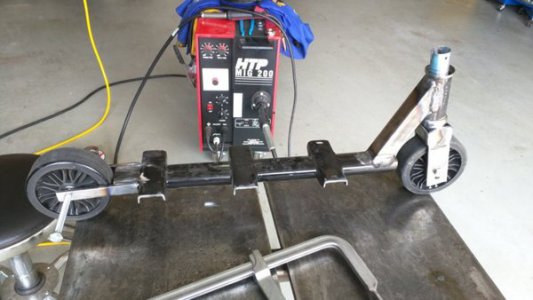
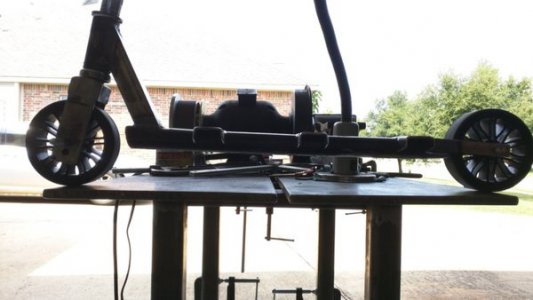
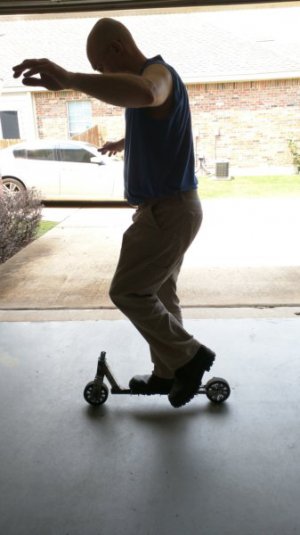
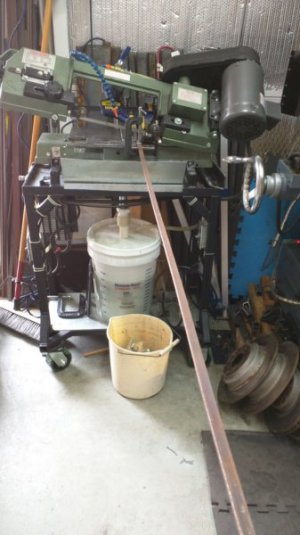
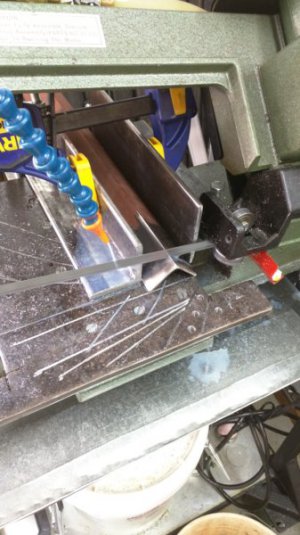
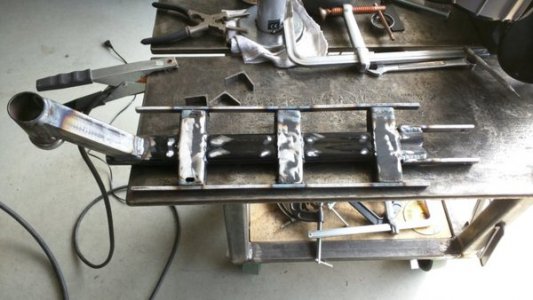
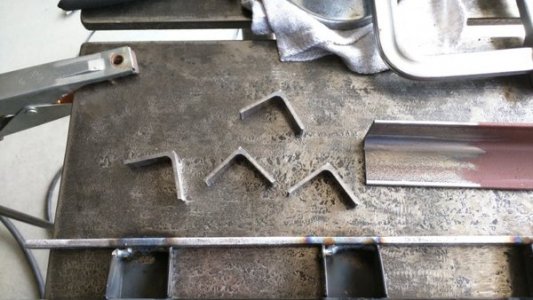
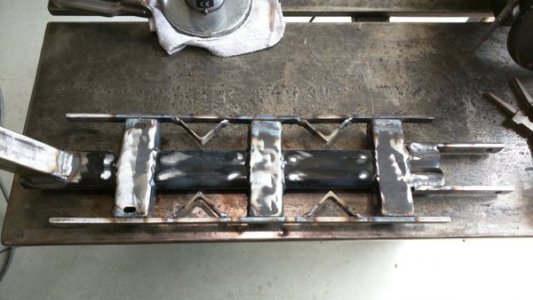
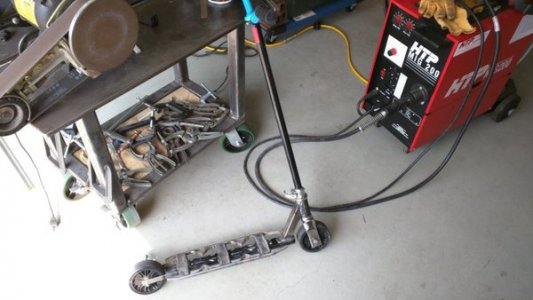
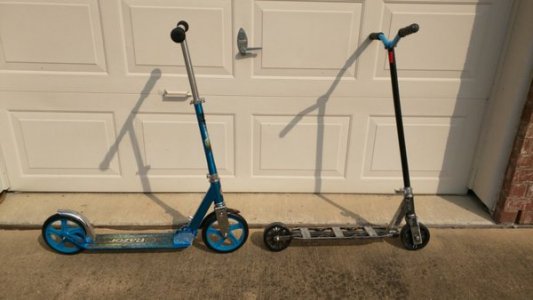
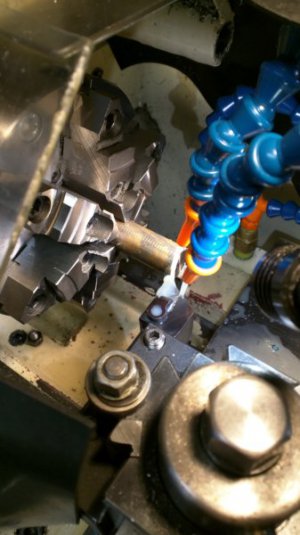
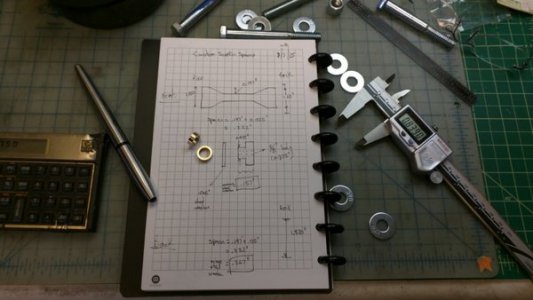
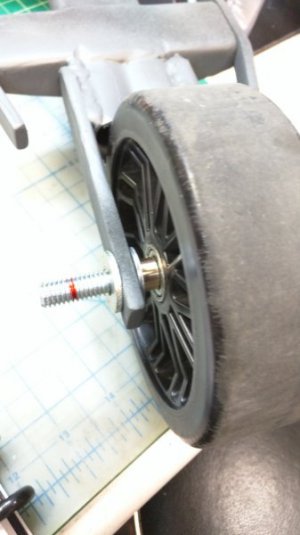
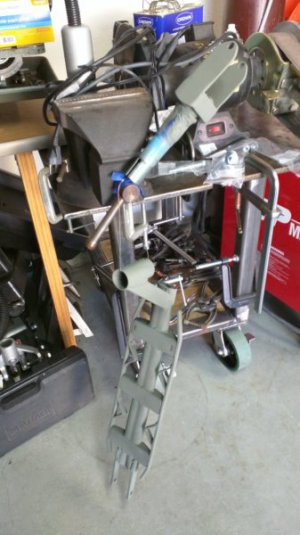
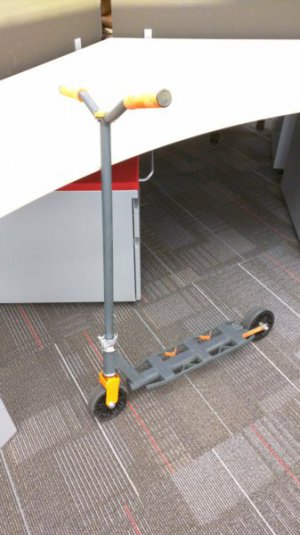

This is what I started from:



At a high level, I wanted "something" like this:

So I started cutting stuff off ...

I cut some scrap pieces to make the new fork, including a re-enforcement plate on each side:


I first welded the two arms, then the plates:


Then marked & drilled the holes for the screw/wheel shaft:


Then I found a "suitable" scrap piece to tie the main board and the headset piece:


I then prepped the curved surface to more-or-less match the curvature on the headset piece and then welded it as straight as I c:



I then again, trying to hold everything as straight as possible, I welded that piece to the base. Since the main steel piece is hollow and relatively "thin", I welded a piece or square tubbing to the inside portion strengthen that "weak" area from bending under weight:


I then did my best to align the new rear fork to try to keep the bed "level" (well, as good as possible), which meant I had to slightly angle the two pieces down a few degrees:


End result. I was not level as I wanted, but close enough:


Quick test to make sure it held weight (about 175 lb):

I then cut the base "wings" all equal, cut more scrap pieces, and welded them to create the "bed" of the scooter:





Here is the mostly completed scooter:


I of course had to cut/trim the bolts, but I also needed custom spacers (front and back), which I made from bearing bronze rod on my lathe:



Prime, and paint. Since my company just re-branded, I went ahead and painted the custom scooter with the basic colors:


How does it work? It it very fast on carpet since the wide tires does not sink into the carpet, but it does turns a little "weird" with the wide tires (unlike the skinny roller blade-type wheels on most scooters), but one gets used to very quickly. Strength-wise, two "big" guys (a little bit over 600 pounds combined) got on the scooter at the time time - solid. No bending/movement of any kind. One of them jumped several times on the scooter. Same - no damage. Far greater strength than I expected.
Total out of pocket = about $35-40 for the new bearings, spray, etc.. Having the only DIY scooter in the company = priceless.

Will





































